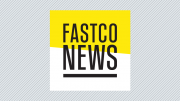The use of big data in human resources is all the rage today. More and more companies, at least the large ones, are collecting and using employee and prospect data to be able to make determinations about their workforces. Predictions are being made about who would make a good employee or which employee is likely to leave. The data is being used for promotions, terminations as well as new hires and it should be. There is however, a downside of the use of that data.
The Risks of Big Data
As a result of having attended the #IBMInsight conference in Las Vegas in October I am a data convert. I more fully understand the impact of proper collection, analysis and use of data. However, at the same time having worked in the compliance arena for as long as I have, I try to be conscious of issues that might arise as we progress in HR. The improper use of big data, or the unaware use of big data, may expose companies to the risk of claims of discrimination.
A major risk is that of disparate impact discrimination. Three attorneys of the Orrick Global Law Group, Erin Connell, Shuanicie Fielder and Mark Thompson, point out that use of software with algorithms that match for a candidate’s “fit” based on reviews of resumes, applications and social media profiles open up companies to difficulty if the programs have not been properly validated under the Uniform Guidelines on Employee Selection Procedures.
Important to Check the Documentation
Before engaging in the use of big data for selections purposes it is important to understand the guidelines. As the Orrick attorneys point out:
“At a growing rate, plaintiffs’ attorneys and the EEOC are pursuing class-based claims that focus on the use of uniform policies, tests or other employee selection procedures that allegedly have a statistically significant adverse impact against a protected group and are not sufficiently job-related and consistent with business necessity.”
They say that software programs or algorithms may be included in these class action cases.
Despite what the software documentation may say it is important to look closely to insure that the proper validation has been done to the standards of the Uniform Guidelines. Any selection procedure, regardless of how automated, must meet the validation requirements. Without this a company may run the risk of being sued by the Equal Employment Opportunity Commission.
Big Data Is the Future
The use of data for predictive purposes is not going to go away. In fact it will become more wide spread as we learn how to scale it to smaller and smaller organizations. That however does not relieve us of the responsibility to comply with the law. As the attorneys pointed out software and algorithms are constructed by people and may be tainted by human bias. Protect yourself with a careful review and analysis of what is being done.





Be the first to comment on "The Compliance Downside of Big Data"